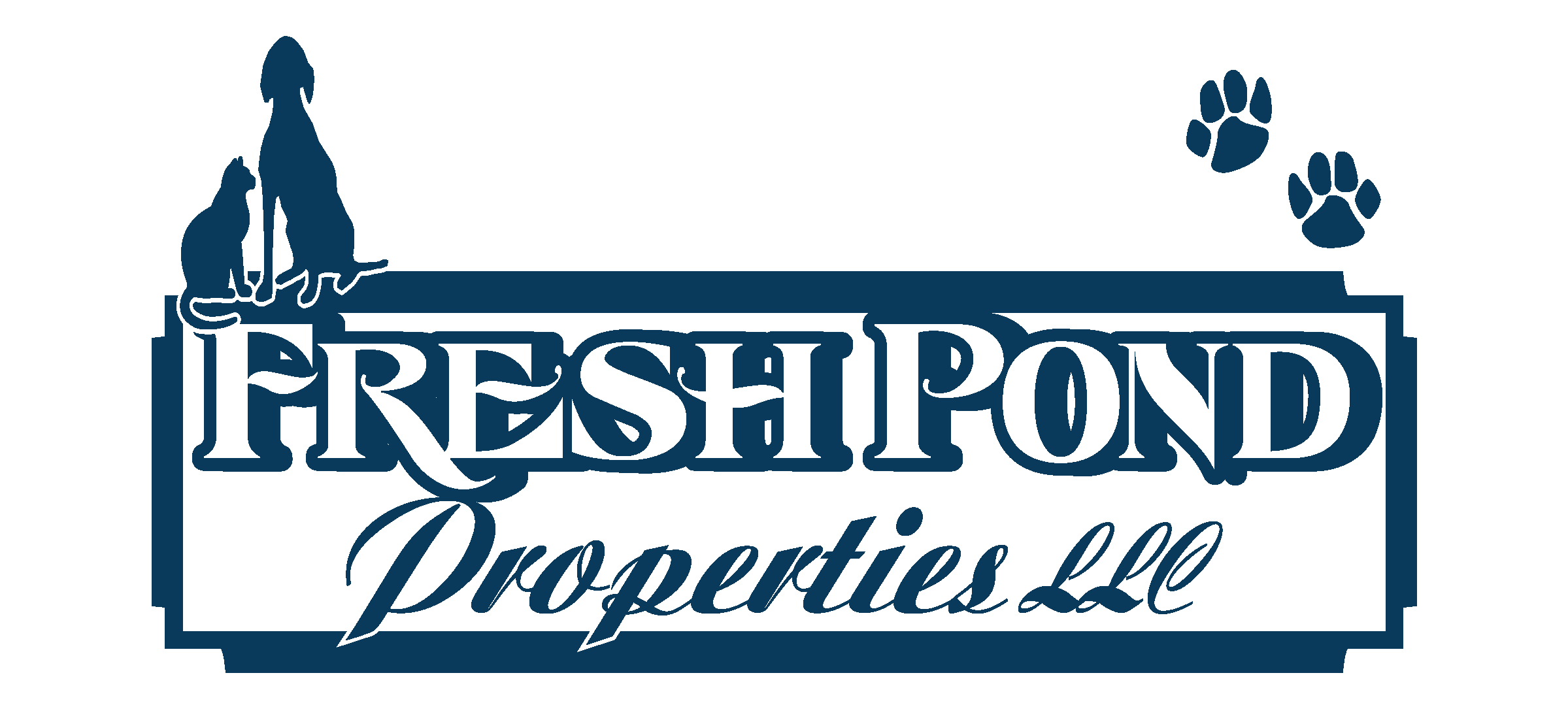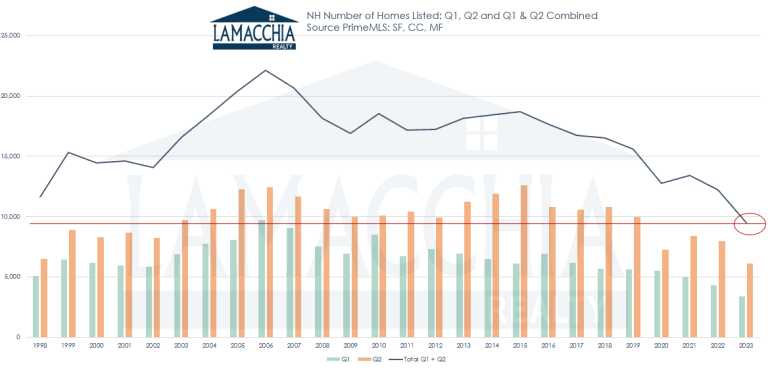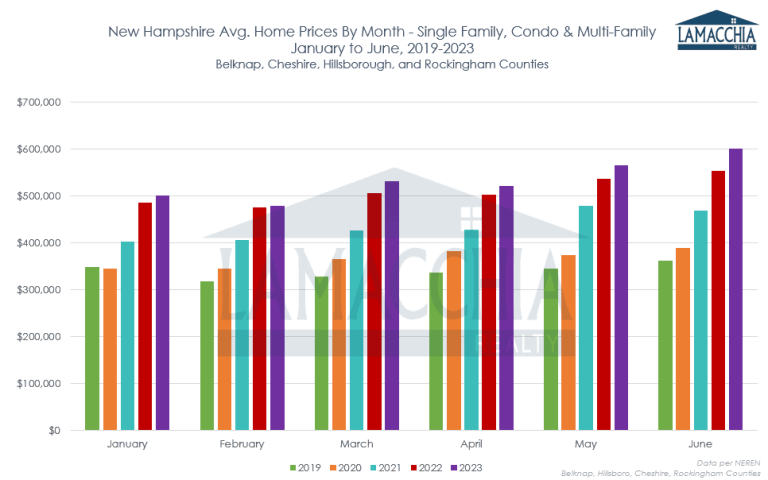
For this report, we are examining Belknap, Cheshire, Hillsborough, and Rockingham counties in New Hampshire; and we are focusing on three property types: single-family homes, condominiums, and multi-family homes.
The New Hampshire housing market experienced a similar outcome consistent with the trends in New England in that sales decreased, and prices increased when compared to the mid-year of 2022 which also saw declines from the previous year which was the frenzied Covid market.
The Number of Homes Sold Decrease 20.9%
Home sales decreased in all three categories, down by 20.9% now at 4,441 total sales compared to the first half of 2022 with 5,617 sales.
- Single family sales decreased by 19.8%, condos are down by 21.3% and multi-families decreased by 30.8%.
- Many sellers are hesitating to put their homes on the market, therefore, the number of new listings is down year over year.
- Listings are the lowest they have been in recorded history, of any 6-month period since records have been kept starting in 1995 (red line) This sure explains why every Realtor feels like business is so slow and why 2023 kicked off with very tight inventory.
- Owners who are locked into covid-era rates between 2 and 4% don’t want to walk away from them and they’re not going to for a while unless they have to. Inventory levels are fighting to recover, but still have not risen enough to compensate for the buyer demand in the market and that is also why prices haven’t dropped.
- The chart below depicts that 2022 was the start of the adjusting market as sales were lower than the previous year, incapable of keeping pace with 2021 as many buyers found what they wanted the year before or pulled out of market and decide to rent. 2023 has followed the same pattern largely due to increasing mortgage rates and rising prices.
Prices Increase 5.5%
Average prices for homes climbed to $545,428 in the first half of 2023, a 5.5% increase over the same time-frame in 2022 at $517,178.
- Prices increased in two out of three categories: singles up by 4.5% and condos are up by 10.8% but multi-families decreased by 2.9%.
- Prices have been rising in this area of New Hampshire for years, but there was the Covid-era spike due to frenzied demand and since then inventory just hasn’t been able to keep up.
- We predicted in the mid-year of 2022 that “the rising rates will impact prices, but it’s not likely we will see prices fall. They may simply not rise at the pace we’ve been seeing, but a drop in prices is highly unlikely.” This has been proven true, as prices climbed 19.3% in 2021, 17.4% in 2022, and 5.5% this year.
- There are alternative mortgage options such as buydowns and mortgage assumptions if the traditional 30-year fixed yields too high of a monthly payment.
- The chart below shows how prices over the past four years have all steadily increased significantly year over year until this year, which is a smaller climb.
Predictions for the Rest of the Year:

Consistent with New England trends, Belknap, Cheshire, Hillsborough, and Rockingham counties have exhibited a decrease in sales and an increase in prices. This is unfolding as predicted but is causing strain on inventory.
Sellers are hesitating to list due to their Covid-era low rates as trading them in for a more current rate of around 7% is a tough pill to swallow. We predict they will stay at this level for at least the next few months. We also expect that we are going to finish the year with the least amount of homes listed in recorded history.
It has been coming down to necessity and life changes to make sellers list. Circumstances of divorce, family growth, relocations, and downsizing have propelled the market but not enough to raise inventory to meet buyer demand. This is why prices haven’t fallen.
Buyers who are out there are committed to finding the home they want that has what they need within their budget which is lower now compared to last year. Rising rates and prices have decreased affordability but that is why staying on top of rates and pre-approvals is essential. As soon as a rate drop happens, buyers should be getting their preapprovals updated to be ready to strike.
As we enter the second half of the year, sellers are met with a mix of positive and negative market conditions. Historically, the beginning of the year proves to be more of the seller’s market. For those that are selling and buying at the same time, however, the latter half of the year is usually the buyer’s market, so it’s still opportune to list now. To achieve success in this market, competitive pricing for your home is crucial. Drawing in a higher number of potential buyers grants you increased bargaining power, enabling you to have greater control over negotiation terms such as timing, contingencies, and price.
With inventory low and prices still holding tight, a housing crash in prices isn’t on the radar. Though rates are up much higher than the pandemic, historically they’re not that high and it’s a common belief that once the dust settles, 5-6% rates will be the norm. If sellers look at it that way, selling and getting into that new home shouldn’t wait because time isn’t going to bring rates down that much. And if they do and prices are still holding strong, a refinance would be a great option to lock in a lower rate.
Data provided by NEREN and compared to the prior year.




